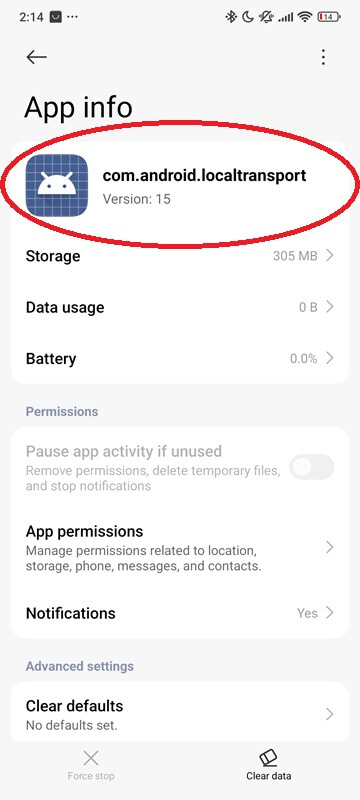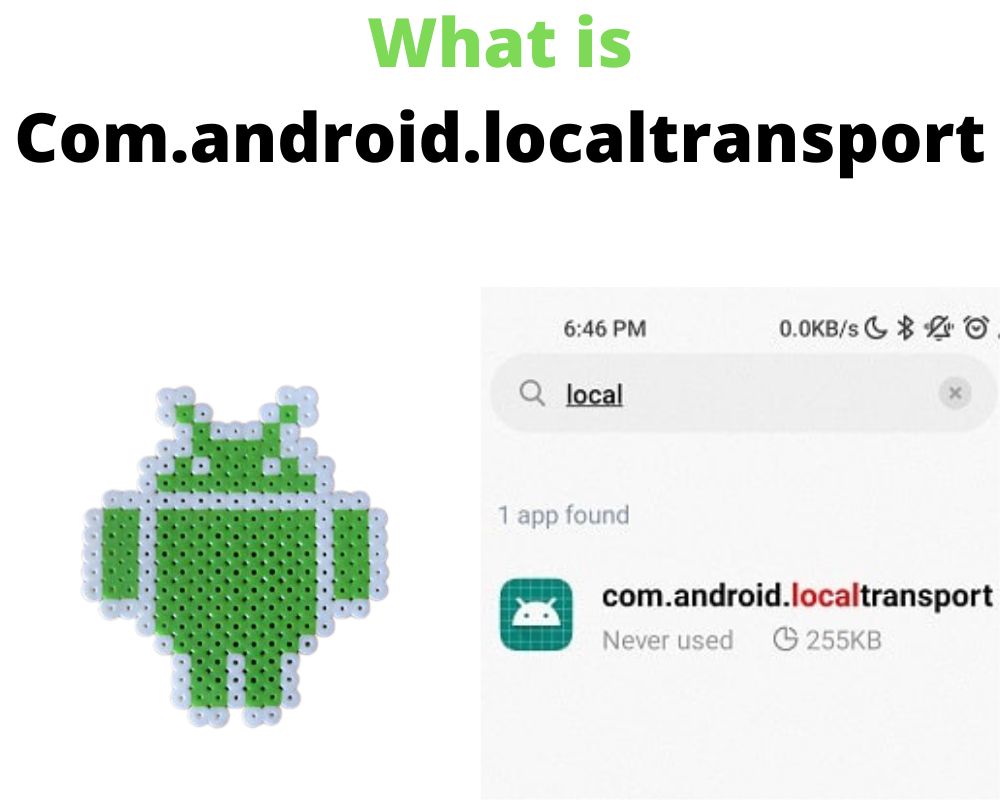You tap “share” on a photo, and it lands in your messaging app without a hitch. Your brightness slider responds instantly in Quick Settings. Your keyboard’s suggestions pop into place mid-sentence. These aren’t isolated moves—they’re coordinated handoffs between separate apps and services. The process behind that communication is invisible, but essential: com.android.localtransport.
It’s not an app. It’s not spyware. It’s not something you control. But it’s what keeps Android talking to itself.
What Is com.android.localtransport?
Android sandboxes every app for security—each runs in isolation, blocked from touching other apps’ data. But isolation creates a second problem: coordination. How does your launcher talk to the UI? How does a photo editor send an image to Gmail? How does a system toggle update a display setting?
That’s where inter-process communication (IPC) comes in. com.android.localtransport is the Android system process that manages local IPC—no cloud, no internet, just direct message-passing across trusted components on the same device. It’s built on Android’s Binder framework, which routes messages securely between processes.

It doesn’t generate content or log activity. It simply delivers messages—like a local courier that moves commands between apps. It starts with the system and stays running, idle until called.
Is com.android.localtransport Malware or Safe?
This process doesn’t access your personal files. It doesn’t transmit data off-device. It doesn’t monitor behavior. Android enforces strict IPC controls using UID checks, permission gates, and SELinux policies (Android’s built-in security rules). Even if a rogue app wanted to intercept IPC calls, it couldn’t—unless your device is rooted or modified.
So why do some security apps flag it? Because it’s invisible. It has no icon, no Play Store listing. Antivirus scanners that alert for “hidden system services” may surface it—even though it’s built into every Android build by design.
Unless you’ve rooted your phone or sideloaded sketchy mods, com.android.localtransport is 100% safe.
Can You Disable com.android.localtransport?
On stock Android, you can’t disable com.android.localtransport—and you shouldn’t try. It’s a core system service that powers secure app communication via Android’s Binder framework. Root tools like ADB or Titanium Backup might let you freeze or remove it, but this risks system instability, breaking features like notifications or app sharing.
There’s no battery or privacy benefit—it stays idle when unused. For security, keep SELinux enabled and avoid untrusted apps. If disabled, Android won’t crash all at once—but things will break slowly and quietly. Accessibility services, system toggles, app sharing, and Assistant commands may stop responding.
See the next section for symptoms.
What Happens If It Fails?
If com.android.localtransport is missing, corrupted, or tampered with, the system won’t scream—it’ll stumble. Issues build up invisibly:
- App sharing menus freeze or fail to open
- System toggles don’t apply instantly (e.g., brightness or rotation)
- Accessibility services stop responding to gestures or taps (e.g., TalkBack, RTT Calling)
- Copy-paste between apps silently fails
- Launcher widgets show outdated info
- Voice assistants fail to trigger actions
To developers watching logcat, this looks like TransactionTooLargeException, RemoteException, or binder: transaction failed. But to users, it just feels like lag or glitchiness.
How to Fix com.android.localtransport Errors
These aren’t just bugs—they’re signs Android’s internal courier is tripping. If com.android.localtransport loses sync, here’s how to get it back on track without breaking everything else.
1. Reboot Your Device
- Press and hold the Power button
- Tap Restart
- Wait for your phone to fully reboot
- This resets Binder queues and reloads essential IPC services
2. Boot into Safe Mode
This disables all third-party apps temporarily, helping isolate rogue apps interfering with IPC.
- Press and hold Power
- Tap and hold Power Off until Safe Mode prompt appears
- Tap OK to reboot into Safe Mode
- Use your phone normally and see if issues persist
3. Clear System Cache (via Recovery Mode)
This clears corrupted system-level data without deleting personal files.
- Power off your phone
- Press and hold Power + Volume Up (or your model’s recovery combo)
- Use volume keys to highlight Wipe Cache Partition
- Press Power to select and confirm
- Once complete, select Reboot System Now
4. Check App Permissions
Misconfigured apps may block IPC or interfere with Binder communication.
- Go to Settings > Apps
- Select recently installed or suspicious apps
- Tap Permissions
- Revoke unnecessary permissions (e.g., Accessibility, Phone, or Background Activity)
5. Install System Updates
Missing updates can cause IPC mismatches or Binder version issues.
- Go to Settings > System > Software Update
- Tap Check for Updates
- If updates are available, install and reboot
- Updates often silently patch system transport bugs
6. Use Logcat (Advanced)
For deeper inspection, connect your phone to a PC with ADB installed.
- Open a terminal and run:
adb logcat | grep binder
You can also inspect suspicious APKs using our APK Analyzer — it runs fully offline in your browser, revealing permissions, exported components, and certificate details without uploading anything.
7. Factory Reset (Last Resort)
As a last resort, a factory reset can restore clean IPC states, but be sure to back up your data before proceeding.
- Go to Settings > System > Reset Options
- Tap Factory Reset
- Confirm with your screen lock or PIN
- Tap Erase Everything and wait for reboot
- Once done, set up your device from scratch (or restore from backup)
Why It Doesn’t Drain Your Battery or Steal Performance
It doesn’t sync in the background. It doesn’t use your network. It doesn’t hold wakelocks. com.android.localtransport is fully passive—Android wakes it when needed, then shuts it down instantly.
CPU usage? Under 1% in most cases. It’s a relay, not a resident.
If your battery stats show activity from this process, it likely means another app is calling it constantly. Fix that app—don’t blame the messenger.
Why Android Still Needs It
Even in 2025’s cloud-dominant ecosystem, local IPC hasn’t gone away. In fact, it’s busier than ever:
- Google Photos sharing to Telegram or Instagram
- Launcher widgets syncing with the system clock
- Accessibility services responding to gestures or voice
- Spotify sharing a track to Instagram Stories
- Keyboard autocorrect syncing with dictionary services
These aren’t handled in the cloud—they’re powered by com.android.localtransport routing messages locally.
Remove it, and Android stops acting like Android.
Final Take
This isn’t an app you can optimize, freeze, or clean up. It’s part of Android’s foundation. If it’s flagged by a scanner, ignore it. If it’s broken, fix the system—not the service.
You’ve blamed your apps for being slow. Maybe it’s the bridge between them that’s missing.

